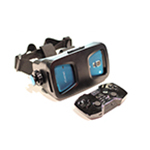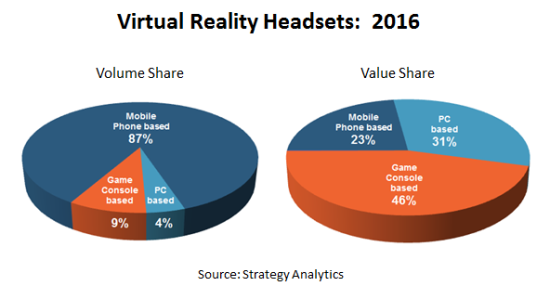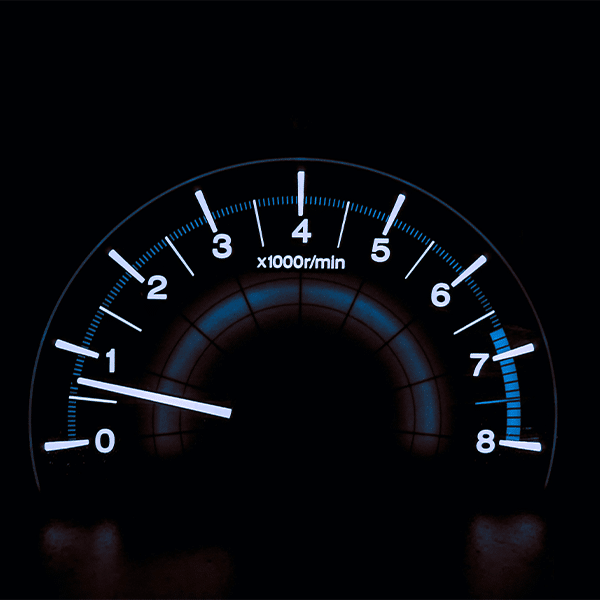 A virtual reality headset forecast from Strategy Analytics calls for worldwide revenues of $895 million this year. The researchers view 2016 as a pivotal year for virtual reality (VR) headsets.
A virtual reality headset forecast from Strategy Analytics calls for worldwide revenues of $895 million this year. The researchers view 2016 as a pivotal year for virtual reality (VR) headsets.
Over three quarters of VR headset revenues will result from sales of just three new premium offerings – from Oculus, Sony and HTC. But combined those companies will account for only 13% of unit volume because the majority of the market will be smartphone-based.
Smartphone users are being ¨bombarded¨ with VR add-ins and bundled VR viewers, researchers note. Strategy Analytics believes these low-cost VR products can serve as gateways that can cultivate consumer awareness and familiarity and lead to opportunities for vendors to up-sell higher priced VR headsets that provide richer, more immersive end-user experiences.
Virtual Reality Headset Forecast Drivers
How well vendors influence, or rather ¨manage,¨ consumer expectations will play a big role in determining the success of efforts to broaden the market beyond gamers, technophiles and other VR early adopters and develop VR commercial ecosystems, Strategy Analytics adds.
In its report, ¨Global Virtual Reality Headset Forecast: 2014-2022,¨ the market research company expects just over 1.7 million premium VR headsets tethered to PCs and game consoles will be shipped in 2016 as high prices constrain greater uptake. Introductory, entry-level smartphone-based VR headsets could boost growth rates if they generate interest in higher-end VR headsets among sufficient numbers of consumers, however.
“Consumers will soon be exposed to an incredible diversity of virtual reality options ranging from ultra-low cost to super premium. While we expect smartphone-based viewers to take the lion’s share of VR headset volumes in 2016 at 87% of shipments, PC and Game Console powered headsets will absolutely dominate value share commanding 77% of revenues,” Cliff Raskind, director of Strategy Analytics’ Wearable Device Ecosystems service, elaborated.
“Additionally, we believe VR has the potential to fuel a new tech spec race in hardware areas such as display resolution, GPUs, storage and 360° cameras.”
A dearth of VR content is another hurdle vendors face as they try to foster familiarity, device sales and usage. The potential of VR to be used in some industry verticals and among developers has come to be more greatly appreciated, but market-ready content will remain in the planning and building phases in 2016, according to Strategy Analytics.

In sum, “Adoption of the more expensive, high-end PC and Game Console based devices will be limited to a subset of early adopter enthusiasts and hard core gamers. The high price of these devices will act as a significant barrier to more widespread uptake,¨director of Strategy Analytics’ Connected Home Devices service David Watkins commented.
¨The PC and Console powered virtual reality market is entering the classic chicken and egg phase whereby the major games publishers are waiting on the side-lines until there are enough VR headsets and users in the market for it to make financial sense for them to build a VR library of content. This is providing independent and niche developers the chance to make a name for themselves before the big boys arrive.”
In new market research released April 7, Parks Associates foresees household penetration of game consoles dropping below 50% by 2019. However, the ability of VR headsets and cloud to stream apps across multiple devices is ushering in a new phase of online gaming market and industry evolution, according to Parks’ NUMBERS research.
Image courtesy of flickr user Michael Heigl.


